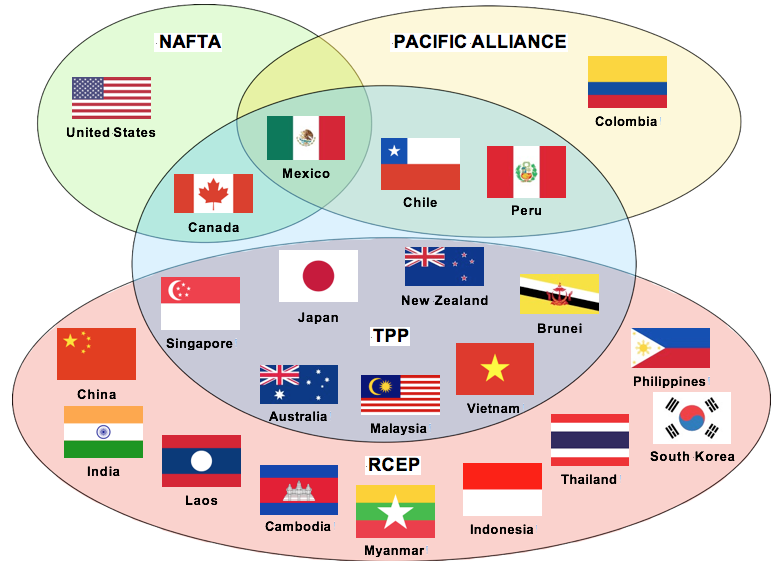BY: Begona Arechalde

PEJOURNAL – The Regional Comprehensive Economic Partnership (RCEP) is a project for the expansion of the free trade area in Asia and Oceania that began to be forged in 2012. After 8 years of negotiations, the ten ASEAN countries (the Association of Southeast Asian Nations, that includes Indonesia, Thailand, Singapore, Malaysia, the Philippines, Vietnam, Myanmar, Cambodia, Laos and Brunei), China, Japan, South Korea, Australia and New Zealand reached an agreement on November 15 that encompasses 30% of the world’s GDP and 2.1 million people.
The meeting, held by videoconference due to COVID-19 safety reasons, was attended by the 15 heads of state and their respective Ministers of Commerce. Although there is no official public document yet, attendees agreed to reduce tariffs by 90% on exchanged goods and the elimination of taxes by 61% on agricultural and fishery imports from ASEAN, Australia and New Zealand, by 56% from China and by 49% from South Korea.
The agreement also includes rules on a score of economic areas, clauses on the protection of intellectual property and chapters on investment and trade in goods and services.
India’s absence from the negotiations is notable. New Delhi is often reluctant to sign deals that include China as it worries that the Indian market will be flooded with Chinese products and that its friendship with Washington will be threatened. RCEP has left the doors open for India to join in the future if it so wishes.
Success in the negotiations could not come at a better time for China, its main promoter. For years, Xi Jinping’s government has sought to become the world’s leading economic power and enhance its reputation through foreign investment. To this end, it has embarked on various mega commercial projects such as the Belt and Road Initiative and the financing of public infrastructures in Africa and Latin America. Building on the liberal narrative that it has long rejected, Beijing is now proposing itself as the saviour of multilateralism and the only viable alternative to the decaying leadership of the United States.
“In the current world circumstances, [the agreement] sheds a ray of light and hope among the dark clouds,” said Chinese Prime Minister Li Keqiang. “[RCEP] clearly shows that multilateralism is the right path and represents the right direction for the world economy and the progress of humanity.”
The announcement is bad news for the United States, which under the Trump administration has been hit hard by the COVID-19 pandemic and social instability. President-elect Joe Biden has made it clear that he will focus his foreign policy on China but to push back the shadow of Beijing he will have to grapple with the legacy of his predecessor. Two years in, Trump’s Trade War against China has left the country in poor shape to duel for influence in Asia, as the costs of tariffs have been largely absorbed by American companies.
Trump also withdrew from the Trans-Pacific Partnership launched by the Obama administration in 2016, which excluded China and hoped to shore up US influence in East and Southeast Asia. Biden has stated that he will try to resume the TPP but chances of success are slim. Although the TPP was more generous than the RCEP in terms of non-tariff rates, many RCEP countries, especially the poorest, doubt that Washington’s interest in economic cooperation is reliable and, driven by the suffocating effects of the pandemic, they have embraced the immediate alternative that the new trade alliance offered.
It remains uncertain whether the upcoming competition for influence in Asia between Washington and Beijing would be less focused on the economy and more on the demonisation of the adversary and military presence in the Pacific. China has learned from its mistakes and has spread its economic tentacles protected by the impenetrable shield provided by the censorship over its population and media. The US has global institutions on its side, but its decimated reputation as well as distance hamper its goals in Asia and Oceania. The prize of this race could be to become the leader in the change towards a new world order that the COVID pandemic has initiated.